How to print a photo on a cotton t-shirt with inkodye
A step-by-step guide to printing a photographic Inkodye print on a 100% cotton t-shirt. Can also be used for prints on pillow cases, upholstery fabric and unprimed art canvas.
517
STEPS
TOOLS
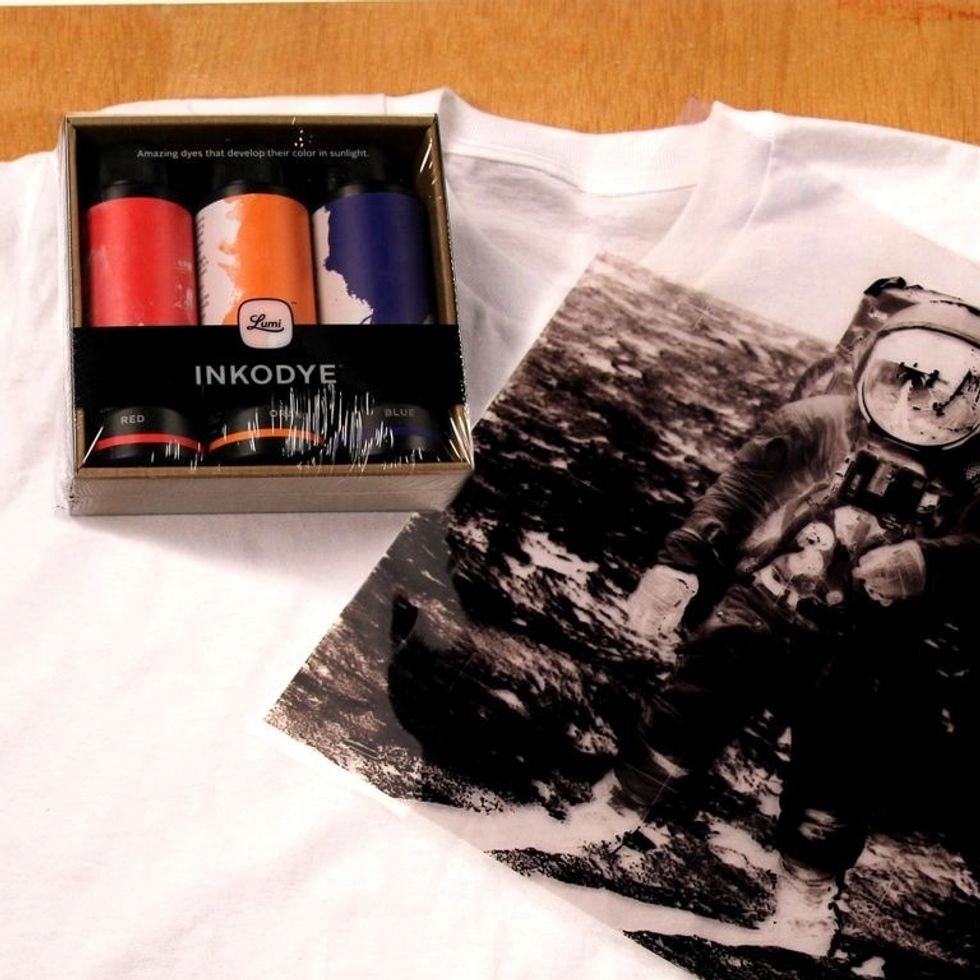
Gather materials for your project. We like using a lacquered piece of plywood as our work surface - it's portable & easily cleaned with a wet paper towel once the project is finished.
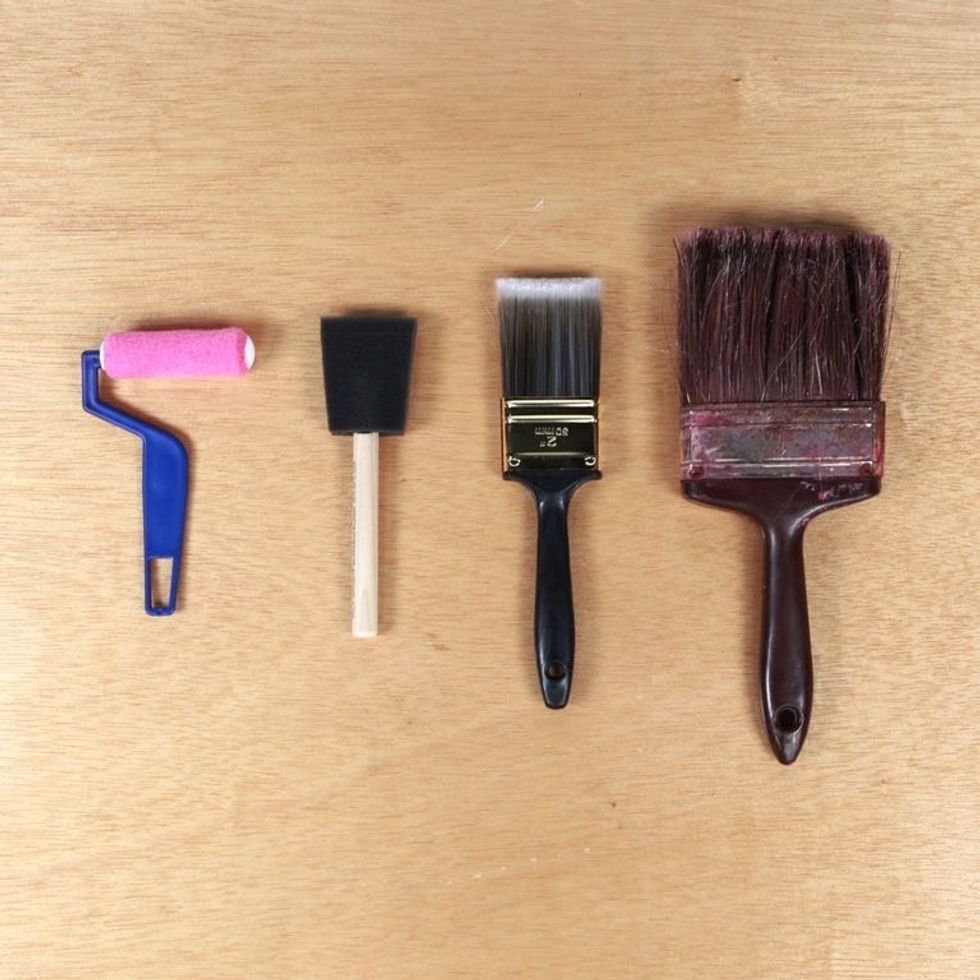
Choose a brush you'd like to work with. We find that a roller lays down a nice even coat of Inkodye without soaking the material. But any brush will do just fine.
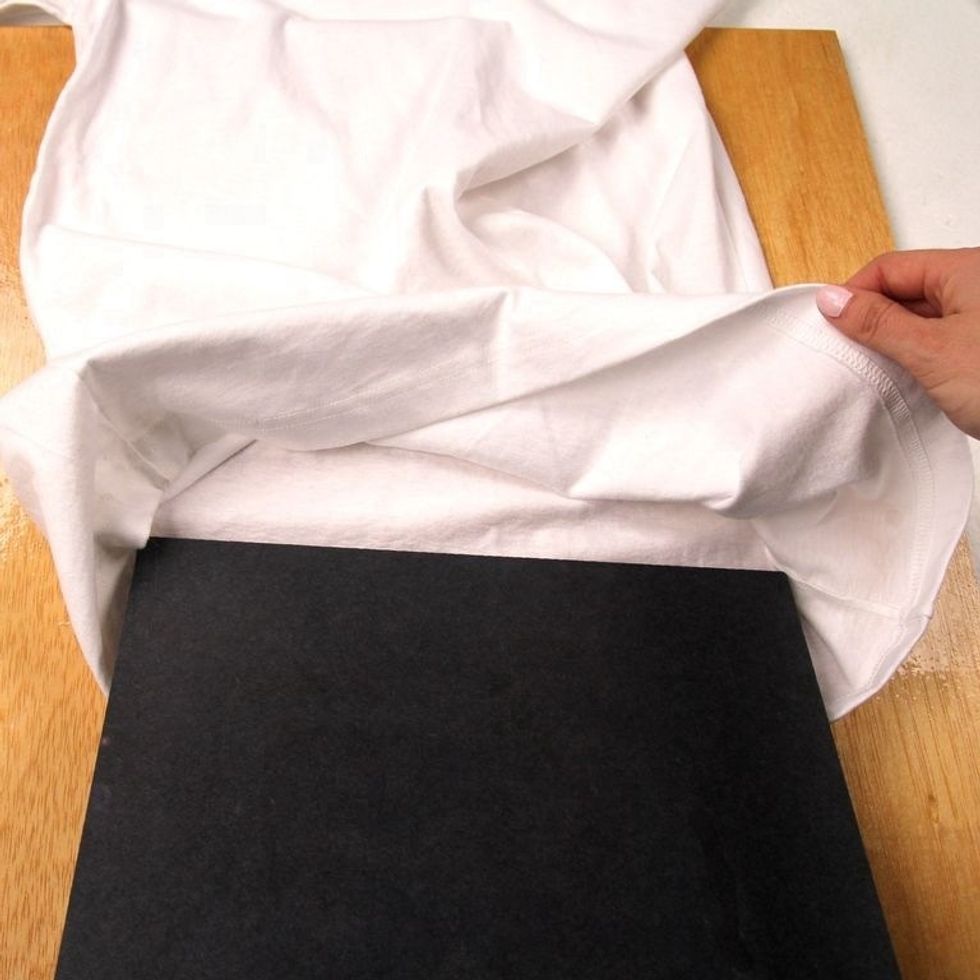
Insert a piece of foam core or gator board to maintain a flat working surface and prevent the dye from bleeding to the back of your shirt.
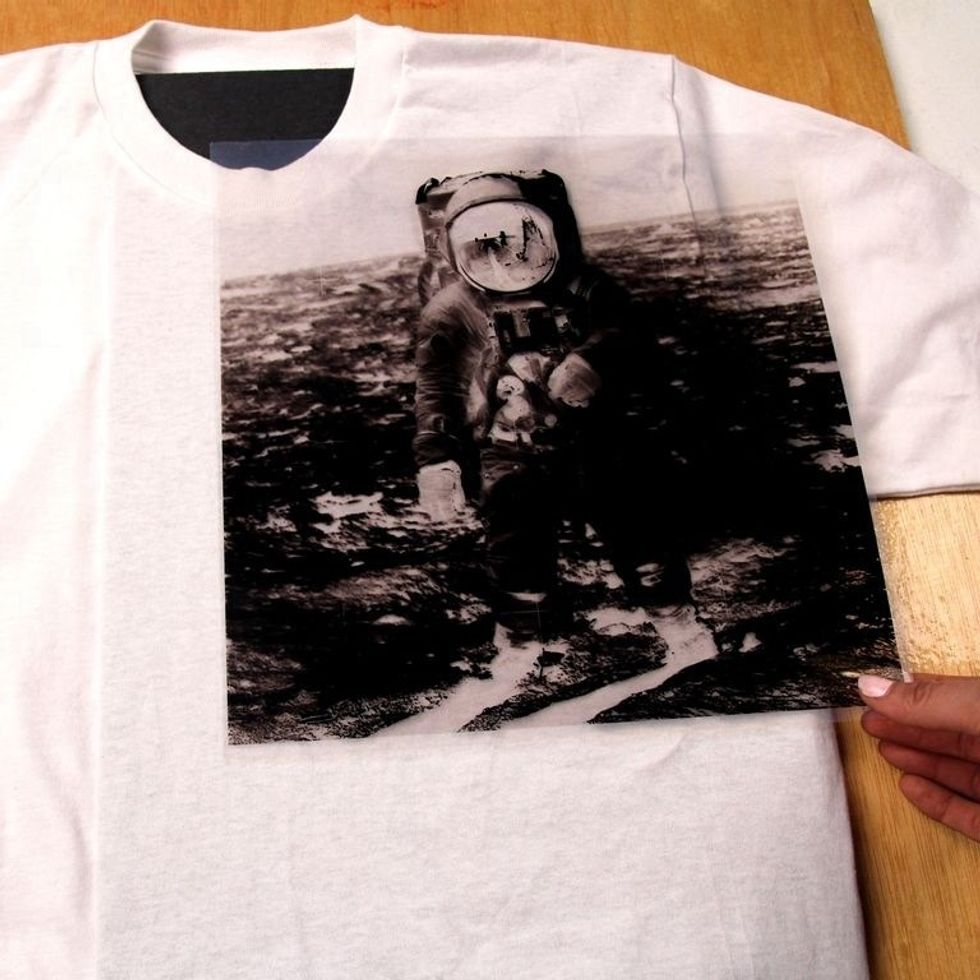
Choose the placement of your negative on your shirt. You can place it in the center or rotate it to make a more dynamic print. We will do ours off-center and let it bleed onto the shoulder!
Tip! If you want to print your image full bleed (without extra edges), mask off a smaller area than your negative covers. This will ensure the full coated area will have image printed on it.
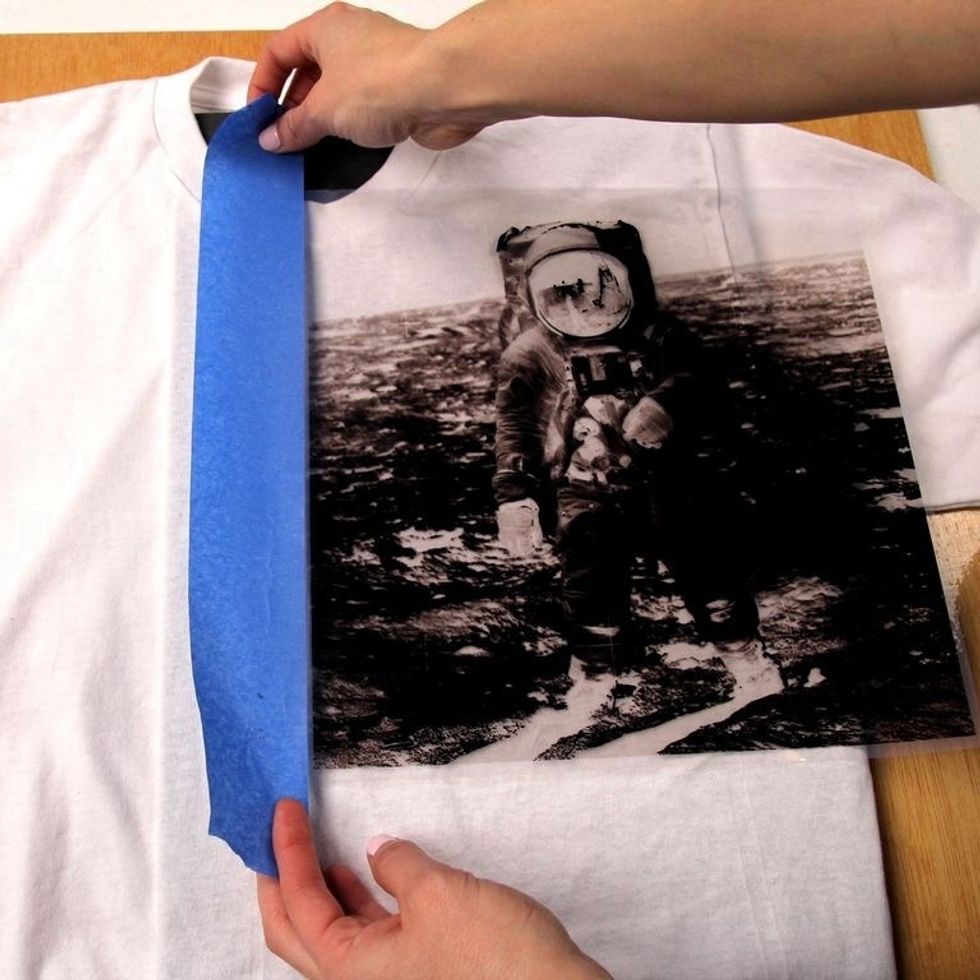
Get creative! Mask off an area with blue painters tape to contain the area you'd like to develop. Be sure not to tape the negative down- the tape will stick.
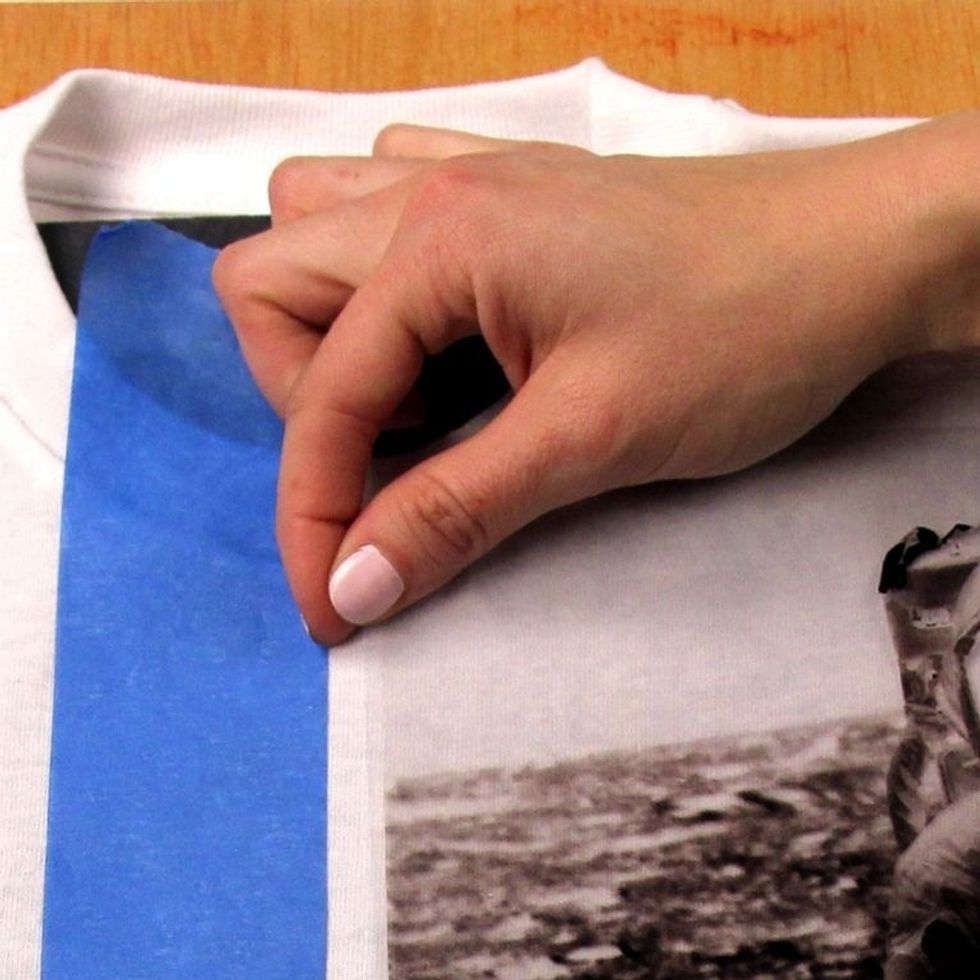
Use your fingernail to press the edge of the tape down to ensure clean edges in your design.

Finish masking off your print area.
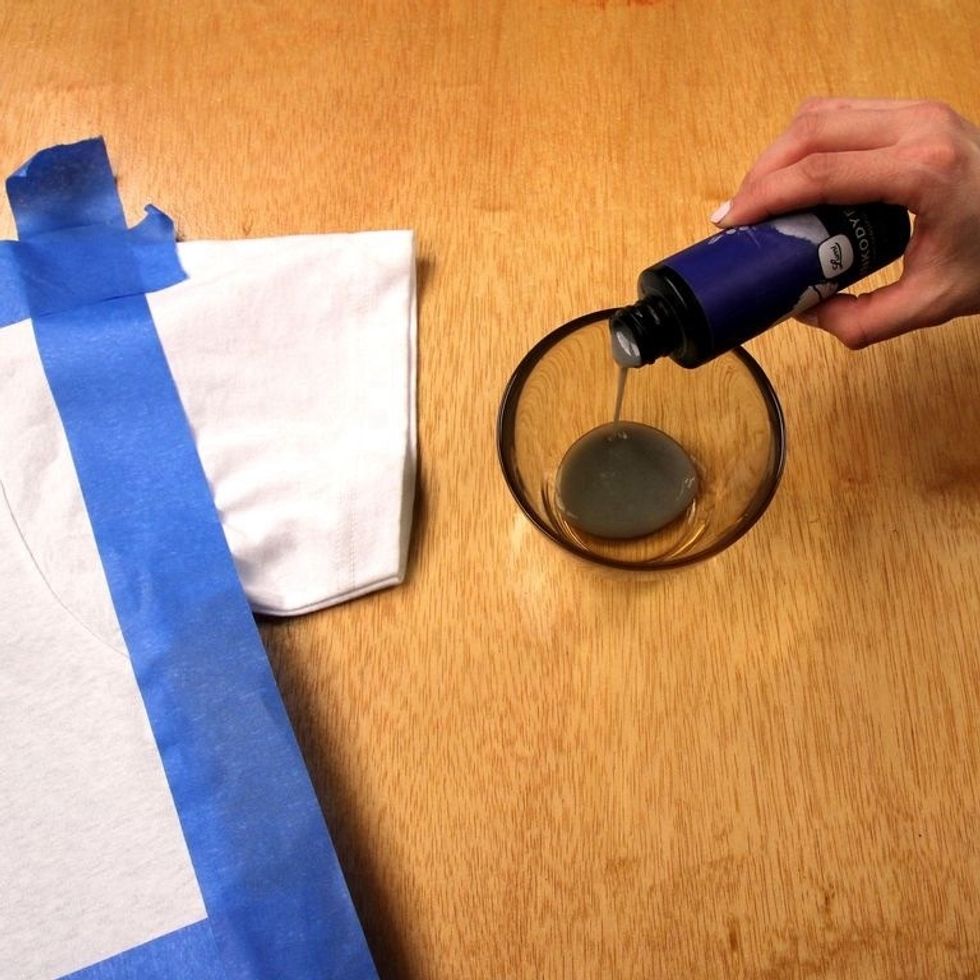
Shake bottle well. Pour Inkodye into a bowl or flat non-absrobent surface. Do steps 9-16 & 19 in a room with subdued lighting- exposure to lots of natural light will begin Inkodye's color development
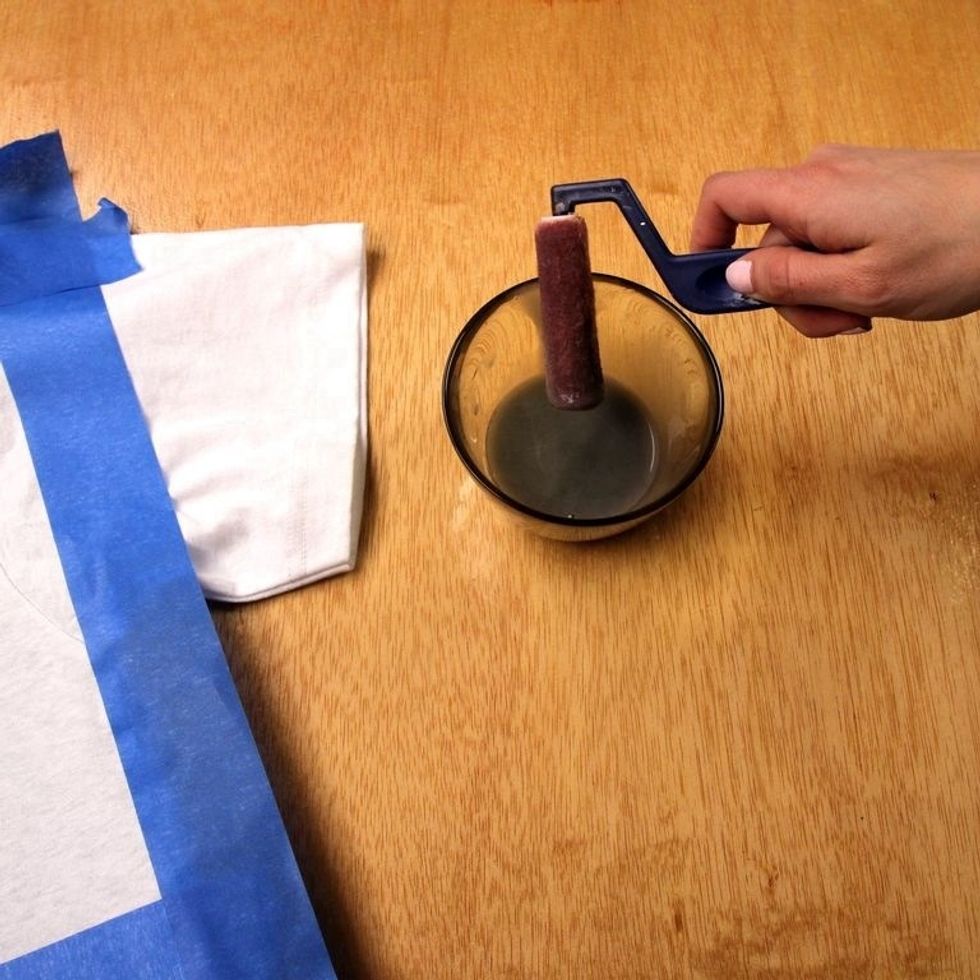
Coat your brush or roller with Inkodye. Use the edges of your bowl to get excess dye off the brush. About 2.5 tablespoons will coat an 11x11" cotton square.
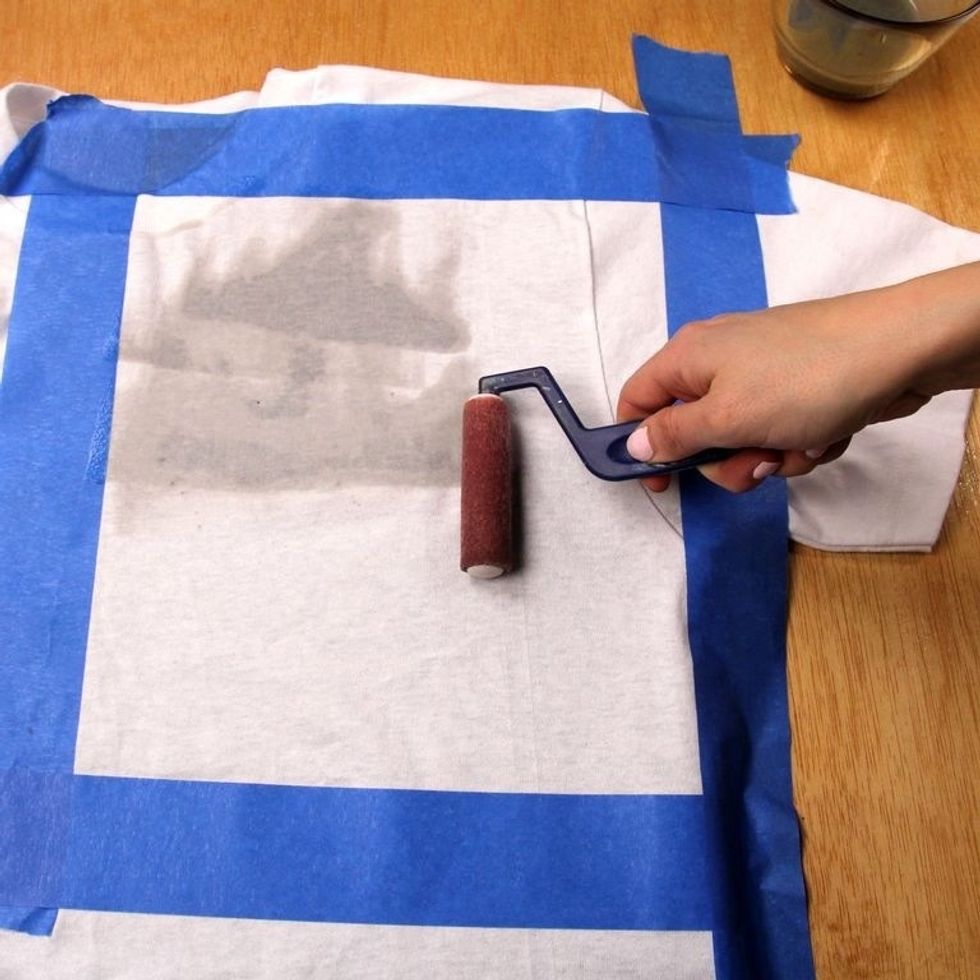
Coat your material evenly with Inkodye. It can be hard to see since Inkodye comes out of the bottle nearly colorless, but you don't need to soak the material. A thin, even coat will do.

Using a paper towel, blot material to soak up excess dye. Tip: Less is more! Material should be fully coated but excess moisture can cause imperfections in prints. Material should not be soaking.
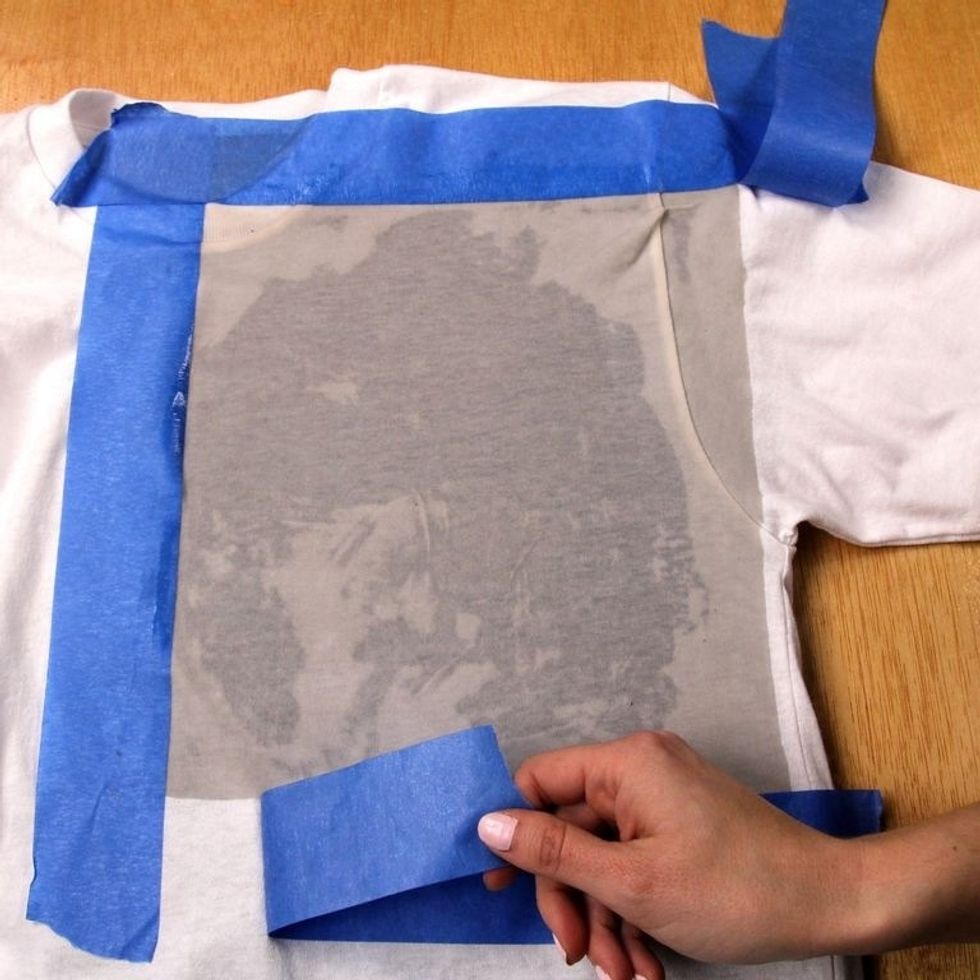
If you'd like, you can remove your tape now or after exposure. If you think dye may have seeped under the tape, wait until after exposure to remove. We're gonna take the risk!
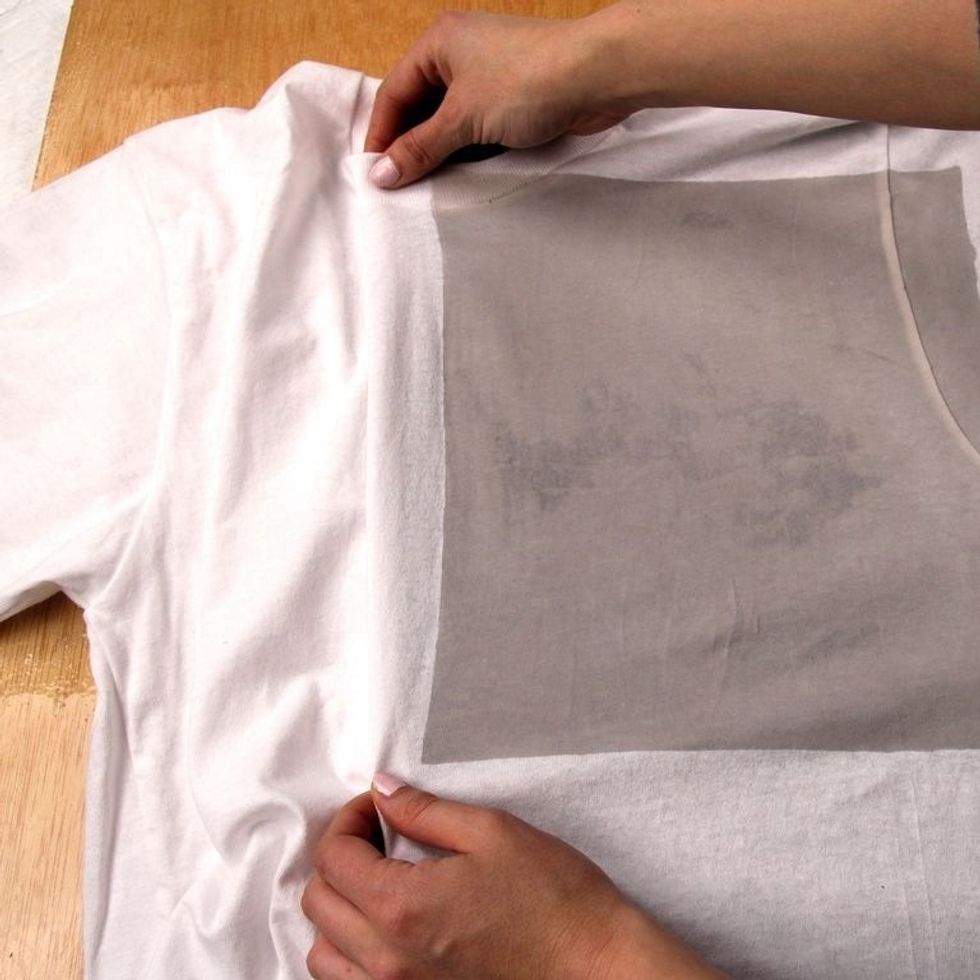
Pull your shirt tight so that the print surface lays completely flat against the gator board.
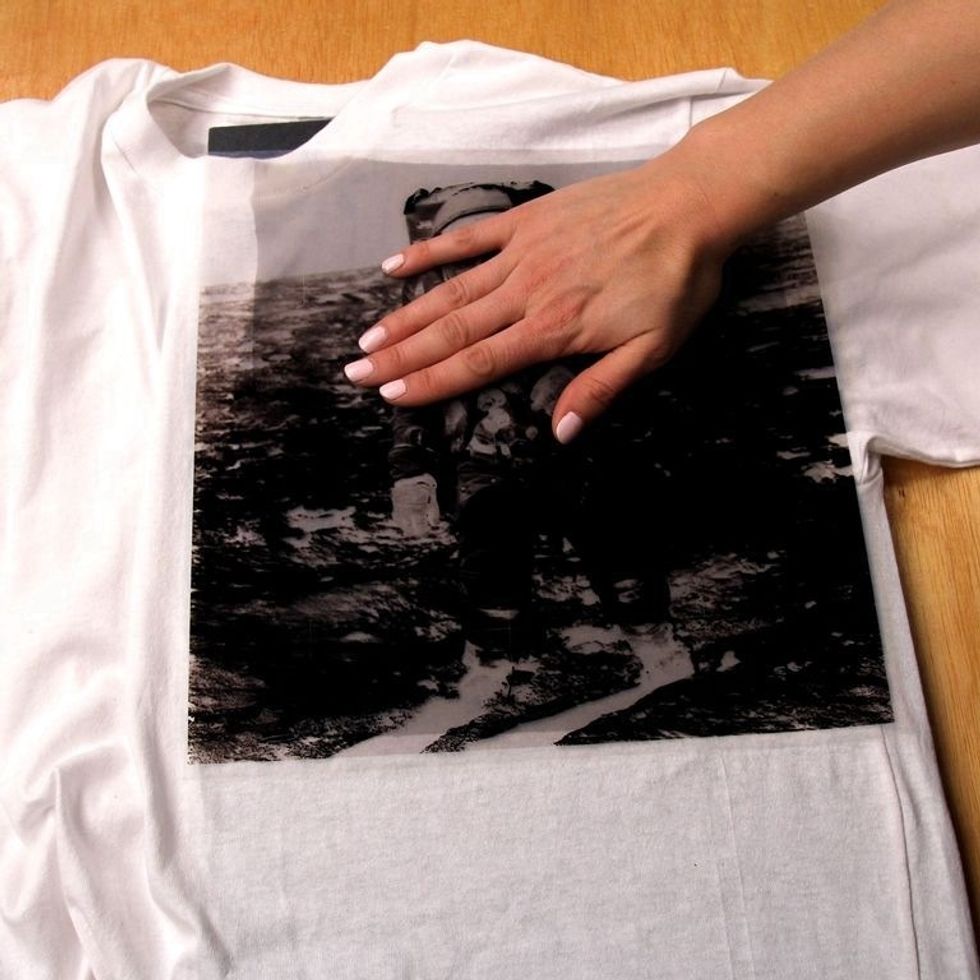
Place negative on top and smooth with your hand. You want your negative to make good contact with your material for best print results. If using an inkjet negative, place the waterproof side down.
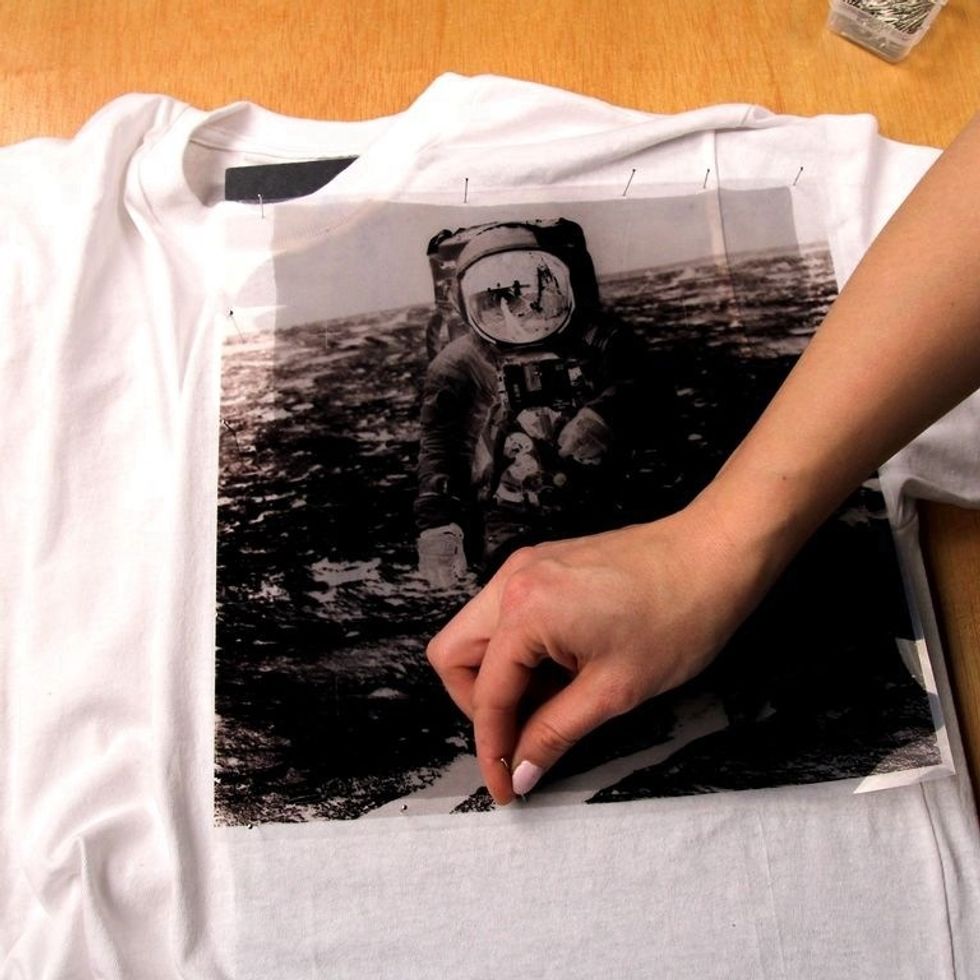
Pin the edges of your negative down with straight pins to ensure the negative doesn't blow away. Be sure your negative is making good contact and not lifting from your coated material.

Expose your print in direct sunlight for 10-12 mins. We recommend exposing when the sun is strongest: between 11am-3pm. You may want to expose your print for 30-45 mins. on a cloudy day.
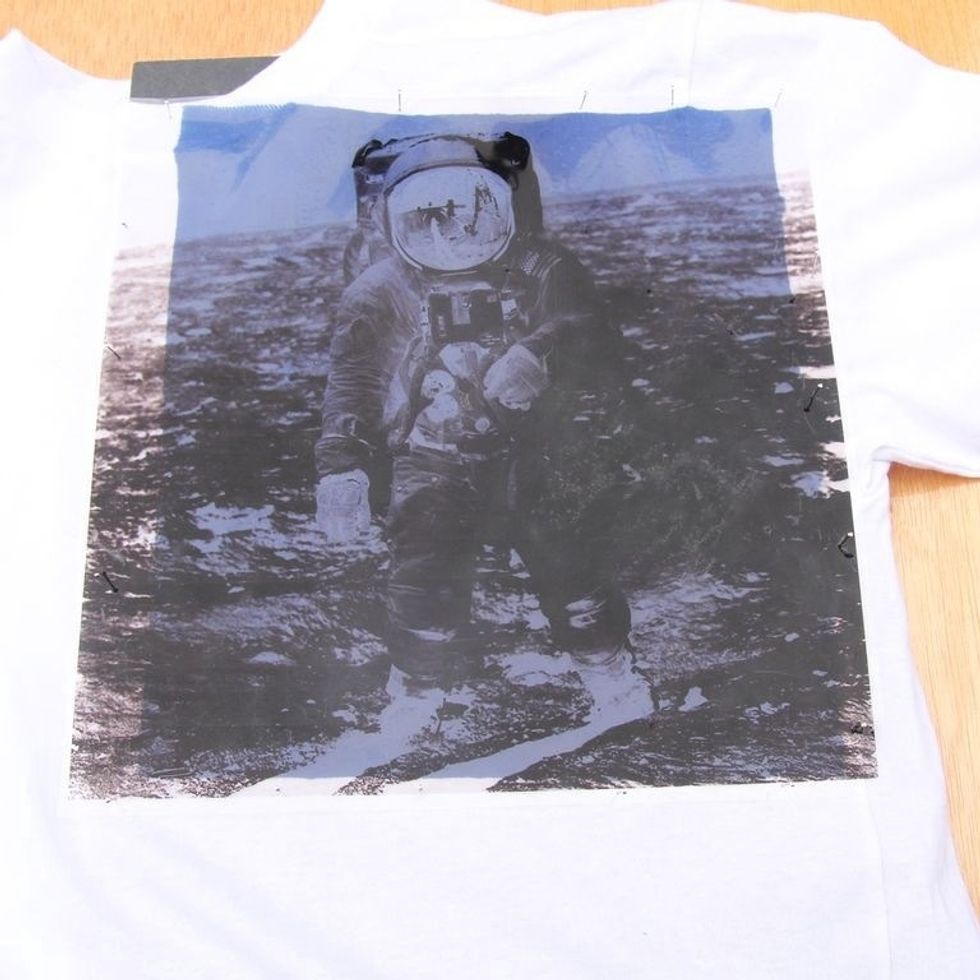
You will begin to see color development within the first few minutes of sun exposure! It may appear to be at its darkest potential after 5 mins, but try to be patient during the entire exposure.

Take your print back indoors and remove the negative in subdued lighting.
Tip: You can clean the waterproof side of your inkjet negative with some water and a paper towel to remove any Inkodye residue. Be careful not to get the printed side wet- it can ruin your negative.
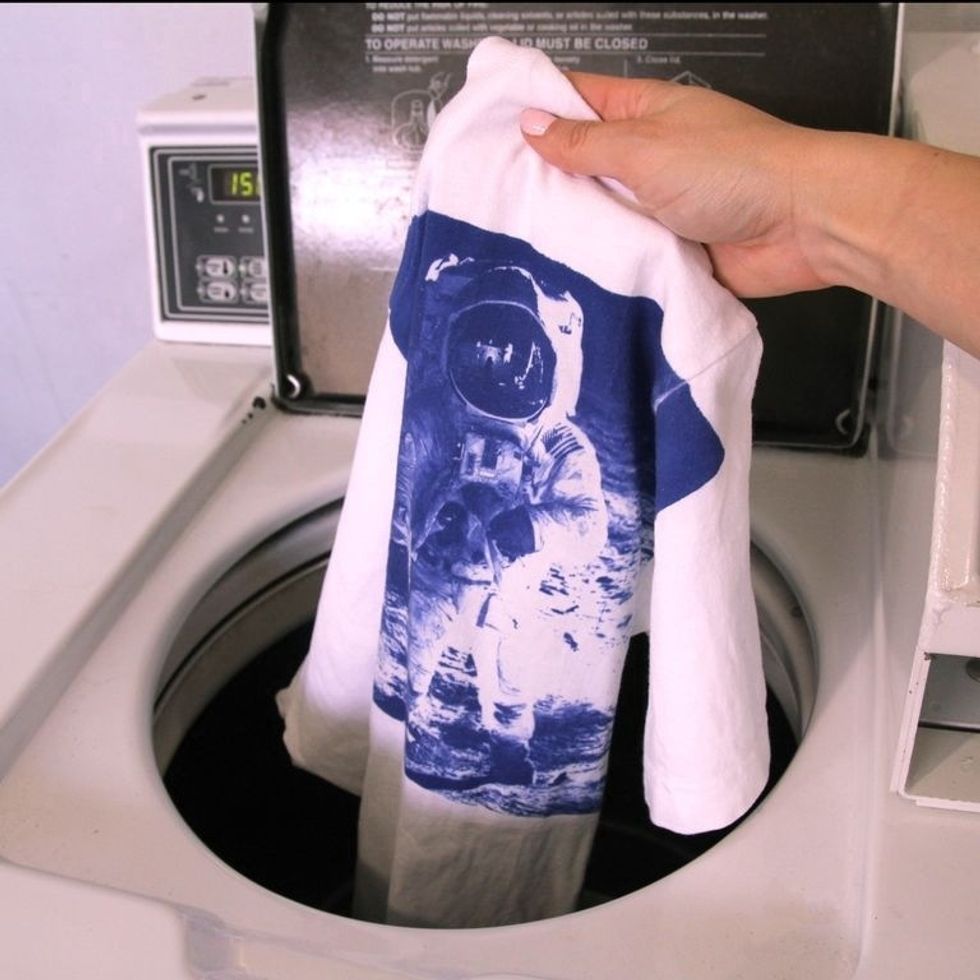
Wash your print with Inkowash to remove unexposed dye. We recommend washing it twice. If you have hard water, using a washing soda or Borax will help.
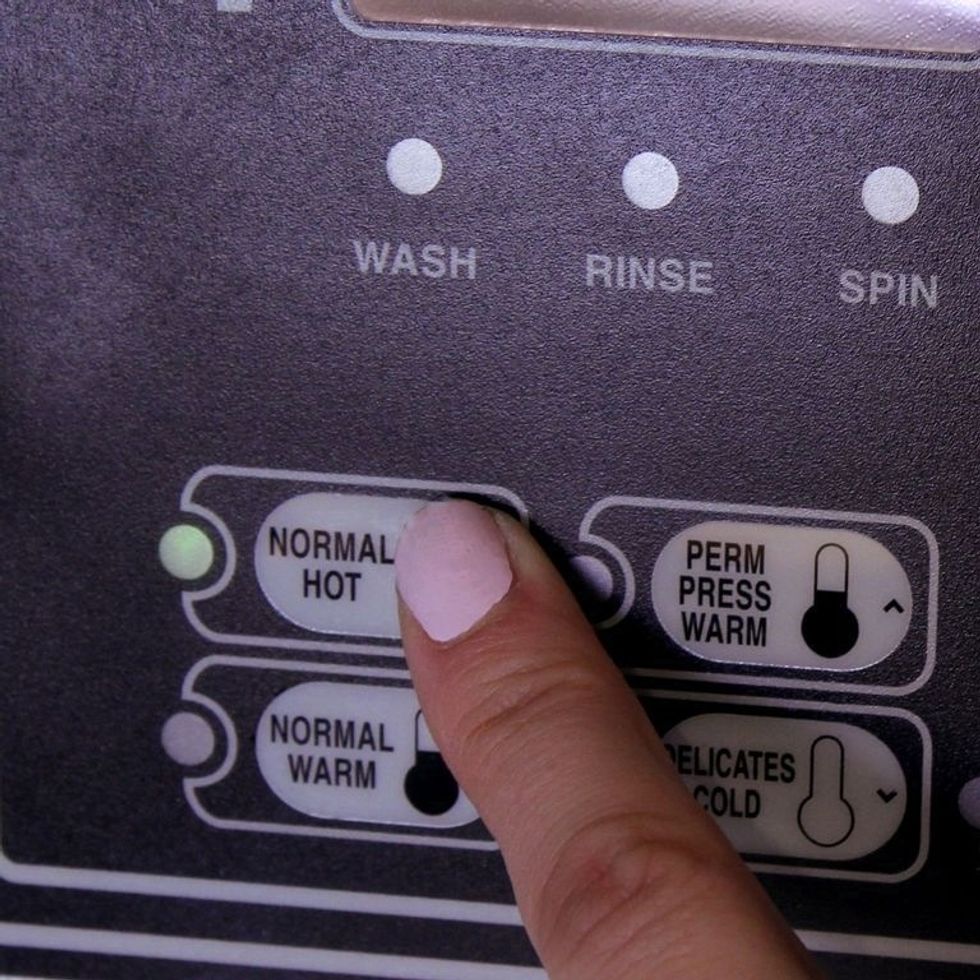
Wash your print twice on the HOT cycle.

Ta-da! You now have a beautiful Inkodye print on a t-shirt. Your print is permanent so you can continue to wash it regularly without fading.

Now go out and show the world what you made!
- 1/2Tbsp Inkodye (purchase at lumi.co)
- 1.0 Roller or brush
- 1.0 A negative (inkjet or laser printed)
- 1.0 T-shirt or other garment made of natural material
- 1.0 Portable flat surface (lacquered piece of plywood)
- Inkowash (or other detergent)
- Wash machine
- A few paper towels
- 1.0 Small bowl or tray
- 1.0 Piece of foam core or gator board
- Some straight pins
- Optional: Blue painters tape
- Optional: Latex gloves to keep your hands clean
Lumi is a design team pioneering the Inkodye printing process, a revolutionary photographic print process for textiles and natural materials.
Los Angeles, CA
The Conversation (0)
Sign Up